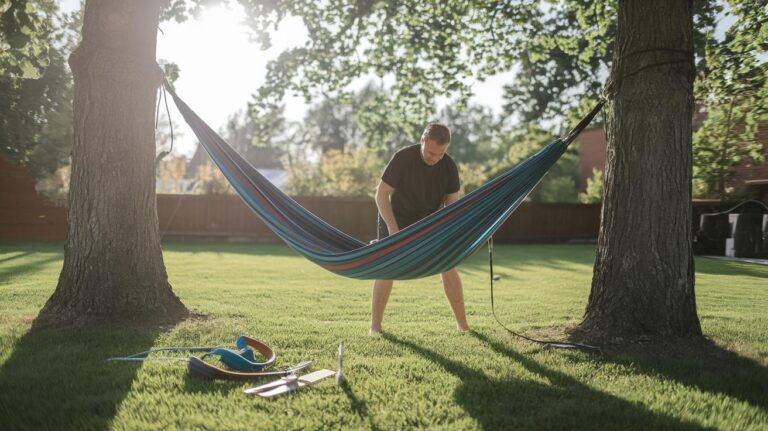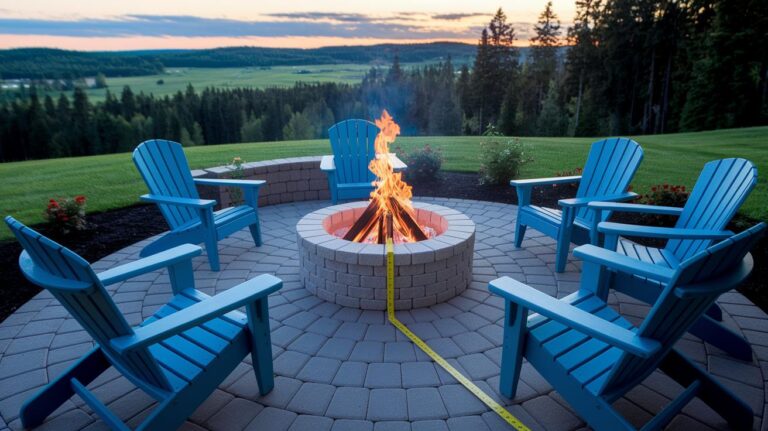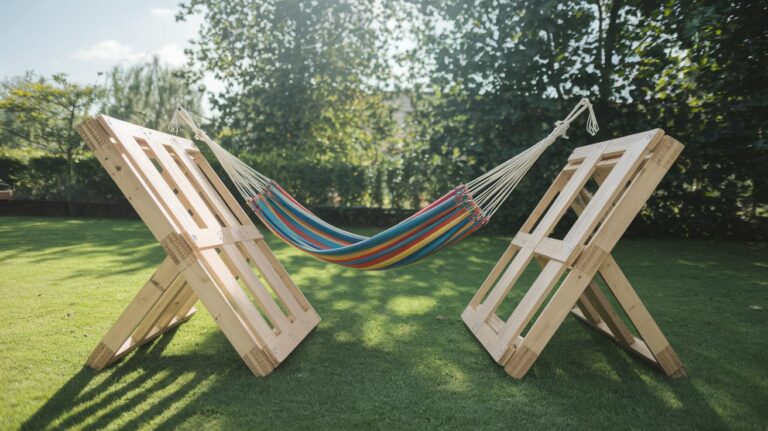Gas Vs Wood Burning Patio Fire Pit Pros And Cons: Brilliant
Hey there, looking to light up your backyard but stuck between instant gas flames and the real-wood crackle?
A gas fire pit turns on with a flip of a switch. It sends clean, smoke-free warmth your way in seconds.
A wood-burning pit brings that toasty oak scent and the cozy roar of live flames.
We’ll chat about cost, setup time, heat level, smoke, cleanup, safety, evening vibes, and even what each choice means for Mother Earth.
Then you can pick the fire pit that makes your patio come alive.
Gas Vs Wood Burning Patio Fire Pit Pros And Cons: Brilliant
Whether you want a push-button flame or the cozy crackle of oak logs, think about cost, setup, heat, smoke, cleanup, safety, evening mood, and planet impact. Here’s a side-by-side look at gas vs wood fire pits to help you decide.
Gas pits cost about $300 to $1500. You hook them to a propane tank (portable gas can) or a gas line for instant flames and easy heat control.
Wood pits run $100 to $1000. You load in seasoned firewood (wood dried well) for roaring warmth, smoky scent, and that timeless campfire sound.
| Feature | Gas Pit Pros | Gas Pit Cons | Wood Pit Pros | Wood Pit Cons |
|---|---|---|---|---|
| Cost | Predictable $300–$1500 range | Higher start price | Low entry $100–$1000 | Price varies by bowl or ring size |
| Setup | Attach tank or line, push-button start | May need a pro gas-line hookup | Portable bowl or ring kit | No instant ignition |
| Heat Output | Adjustable heat control | Lower peak warmth | Intense blast of heat | Heat drops as logs burn |
| Smoke | Minimal smoke and particles | No smoky aroma | Rich campfire scent | High smoke and particles |
| Cleanup | Annual burner check and wipe | Need to check for leaks | Just scoop out ash | Clean ash and vents often |
| Safety | No flying embers, quick shut-off | Risk if gas leaks unchecked | Flame sits in bowl | Sparks and ember risk |
| Ambiance | Steady flame, color options | Lacks real crackle | Campfire glow and sounds | Smoke may bother guests |
| Planet Impact | Clean burn, low particulates | CO₂ emissions | Renewable wood, natural aroma | Releases PM2.5, CO, VOCs |
If your yard is small or you have burning rules, a gas pit that lights with one click and stays spark-free might be your best friend. Plus, if you want to dial in steady warmth without chasing logs or shoveling ash, gas keeps things lean and clean. But if you love the smoky scent and crackle only real wood gives, and you don’t mind hauling dried logs, then a wood pit will fill your night with campfire magic. Just scoop out ash afterward and keep a spark screen on hand. Budget matters too: wood starts low while gas may need a pro hookup. Either way, add a bit of safety gear and a touch of care, and you’re set for happy fire-pit nights!
Installation and Setup for Gas vs Wood Burning Patio Fire Pits

Setting up a natural gas fire pit usually means hiring a licensed pro to dig a trench, run a gas line, get permits, and hit your town’s building codes. Having a pro on the job makes sure every joint is sealed tight and passes utility inspections. If you’d rather DIY a propane fire pit, you skip the trenching and focus on placing the tank and hooking up the hose. Oh, and before you dig or park that tank, check your local rules for outdoor fires.
Propane fire pits often come with matchless ignitions or a push-button valve so they light in seconds. You hook the tank to the burner manifold (the part that spreads the flame), tighten the regulator, then open the control valve. Always give each joint a leak test with soapy water and keep the tank level. For step-by-step help on running natural gas lines and ignition options, see how to install a gas patio fire pit.
Assembling a wood-burning fire pit is usually a breeze, and I love the crackle of logs on a cool night. Your kit arrives with a metal bowl (or ring), brackets, legs, and screws. Just pick a level spot, lay down an approved hearth pad (a fire-safe base), and bolt on the legs.
Keep it a safe distance from your house, fences, and plants. A few towns ask for an open-burn permit before you light up, so check your local codes on pad materials and clearance.
- Gas Fire Pit Installation Steps
- Check your local permit rules for outdoor gas fires.
- Mark out and clear the trench path.
- Decide if you’ll hire a pro or DIY the gas line trench.
- Install the regulator and push-button ignition valve.
- Spray soapy water on each connection to test for leaks.
- Wood Fire Pit Assembly Steps
- Choose flat ground and lay an approved hearth pad (a fire-safe base).
- Bolt the legs or ring into the metal fire bowl.
- Keep a safe gap from buildings, fences, and shrubs.
- Secure a spark screen before your first flame.
Operating Costs and Fuel Efficiency for Gas vs Wood Patio Fire Pits
Gas fire pits usually cost you $300 to $1,500 up front. Wood-burning models start around $100 and top out near $1,000. Those prices cover just the main unit, not extras like burner pans (metal trays that hold your gas flame) or spark screens (wire mesh covers that keep embers in).
Propane runs about $2.50 to $3.00 per gallon. If you hook into a natural gas line, you’ll pay by the therm (a heat-energy unit), often at a lower rate. Seasoned hardwood firewood sells for $200 to $400 per cord (a stack roughly 4 feet high, 4 feet wide, and 8 feet long). But wetter logs burn slower, make more smoke, and can bump up your seasonal wood spend.
When you map out your fire pit budget, don’t forget ongoing upkeep. With gas you’ll need annual burner checks. With wood you’ll scoop ash and clean vents so air can flow. Factor in your seasonal fuel tabs and gear too, heat-resistant gloves, those spark screens, maybe a log carrier.
Over a year, gas gives you a gentle, steady heat, just turn the knob and you’re set. Wood brings that crackling roar and deep orange glow, but you’ll be flipping logs and stoking embers more often. That extra attention plays into your total cost of ownership, both in time and money.
Heat Output and Ambiance: Gas vs Wood Burning Patio Fire Pit Pros and Cons

| Feature | Wood-burning | Gas |
|---|---|---|
| Heat (how hot it gets) | Up to 1,100°F – a roaring blaze | 50,000–100,000 BTU (British Thermal Unit, a heat measure) for steady warmth |
| Smoke | That rich, campfire scent | Almost no smoke |
| Ambiance | Portable rings or bowls that crackle as they burn | Flame-color options and multiburner patterns for a custom glow |
Maintenance & Safety
Routine chores give your fire pit some extra care. Every year, gently brush the burner ports (the tiny holes where flames appear). Oops, I always end up with ash on my boots when I scoop it out, but it’s worth it.
Check hoses and fittings with soapy water. Watch for bubbles that signal leaks. After each fire, clear vents or mesh screens so smoke and air flow easily.
Keep a clear zone around your pit. Move chairs, leaves, or any other flammables at least three feet away. You’ll feel safer knowing stray sparks won’t land where they shouldn’t.
Winter Care Tips:
- Spray gas valves (the parts that control fuel flow) with a water-repellent spray to keep them from sticking.
- Toss a weatherproof cover over your wood-burning bowl (the metal basin that holds logs) to guard against rain, snow, and rust.
When you add logs or adjust coals, slip on fire-resistant gloves. Store propane tanks or firewood at least ten feet from any open flame. It only takes a bit of extra distance to keep accidents at bay.
Environmental Impact of Gas vs Wood Burning Patio Fire Pits

Ever watch smoke curl from a fire pit? Gas-burning pits mostly give off carbon dioxide (CO₂) and just a few specks of soot (tiny black bits). You’ll see under 5 milligrams (mg) of particles each hour. By contrast, wood fires spit out 300 to 400 mg of soot, plus volatile organic compounds (VOCs, smelly gases) and PM2.5 (microscopic particles under 2.5 microns) every hour.
Wood smoke can make your eyes water, leave your throat scratchy, and even stress your lungs with all that PM2.5 (that’s air pollution so fine it sneaks deep into your breathing passages). A gas pit in the open air barely makes any carbon monoxide, the odorless gas that worries us indoors. But light wood in a covered spot and you can spike tiny particles to 800 micrograms per cubic meter (µg/m³) around your seating area, gas usually stays under 20 µg/m³ there.
Want a cleaner, hotter burn? Grab seasoned hardwood (wood dried until it’s under 20 percent moisture). Split logs into smaller pieces so they dry faster, and store them off the ground to keep them crisp. Avoid treated or painted lumber and softwoods that spit sticky resin. These simple steps shave off pollutants and crank up the heat with zero extra fuss.
Deciding Between Gas or Wood Burning Patio Fire Pit: Decision Checklist
-
Gas pit glory
Go gas when you want fire at the click of a button. It flares up instantly, barely smokes, and leaves almost no ash to scoop out. I love that ease. Plus, tying into a natural gas line can even bump your home’s resale value. -
Wood fire magic
Pick wood for that real crackle and smoky aroma that cocoons you in warmth. Have you ever savored that campfire scent? It’s perfect for roasting gooey marshmallows and adding rustic backyard charm. -
Budget check
Gas setups usually cost more upfront and need propane (portable fuel) or a steady gas hookup. Wood pits cost less at first, but you’ll be hauling logs and scooping ash, oops, mind the mess! -
Local rules
City yards often require clean-burning gas. In rural areas, open wood fires are usually fine. -
Ambiance vs. upkeep
Gas means push-button warmth with almost zero fuss. Wood asks you to tend the fire, shift logs, and soak in every flicker.
Final Words
We jumped right into a side-by-side look at cost, heat, smoke, and upkeep. We weighed propane’s easy flame control and low fumes against wood’s crackling warmth and smoky aroma.
Installation steps, safety gear, and eco impact got the same friendly dig-in. Gas models ease cleanup, while wood demands ash removal but rewards with rustic charm.
Armed with gas vs wood burning patio fire pit pros and cons, you’re ready to pick your perfect fit and toast cozy nights under the stars.
FAQ
What are the cost differences between gas and wood patio fire pits?
Gas fire pits cost more up front (about $300–$1,500 plus hookup), while wood models start around $100–$1,000 but require ongoing wood purchases and ash cleanup.
How do heat outputs compare between gas and wood fire pits?
Gas units deliver a steady 50,000–100,000 BTU on demand, whereas wood pits can spike to 1,100 °F with a smoky, crackling flame.
What installation steps are needed for gas versus wood fire pits?
Gas pits often require a licensed line hookup, trenching, and permits. Wood bowls are portable and typically assemble in minutes with basic hardware.
What maintenance do gas and wood fire pits require?
Gas pits need burner‐port cleaning, connection checks, and winterizing. Wood pits require ash removal and vent or mesh‐screen cleaning after each use.
How safe are gas fire pits compared to wood‐burning models?
Gas pits offer precise flame control with no spark risk. Wood fire pits need spark screens and more diligent supervision to manage embers.
What environmental impacts do gas and wood fire pits have?
Gas emits mainly CO₂ with few particulates, while wood smoke releases soot, volatile organics, and fine particles that can affect air quality.
Which fire pit type runs lower operating costs?
Propane costs $2.50–$3.00 per gallon; natural gas is cheaper if piped in. Seasoned hardwood runs about $200–$400 per cord.
Can I cook over gas and wood patio fire pits?
Yes—use grill grates or skewers. Wood adds smoky flavor but needs ash control; gas gives steady heat without flare-ups.







